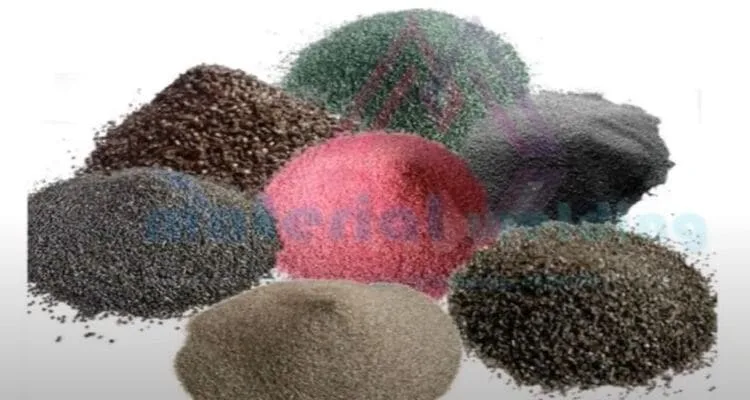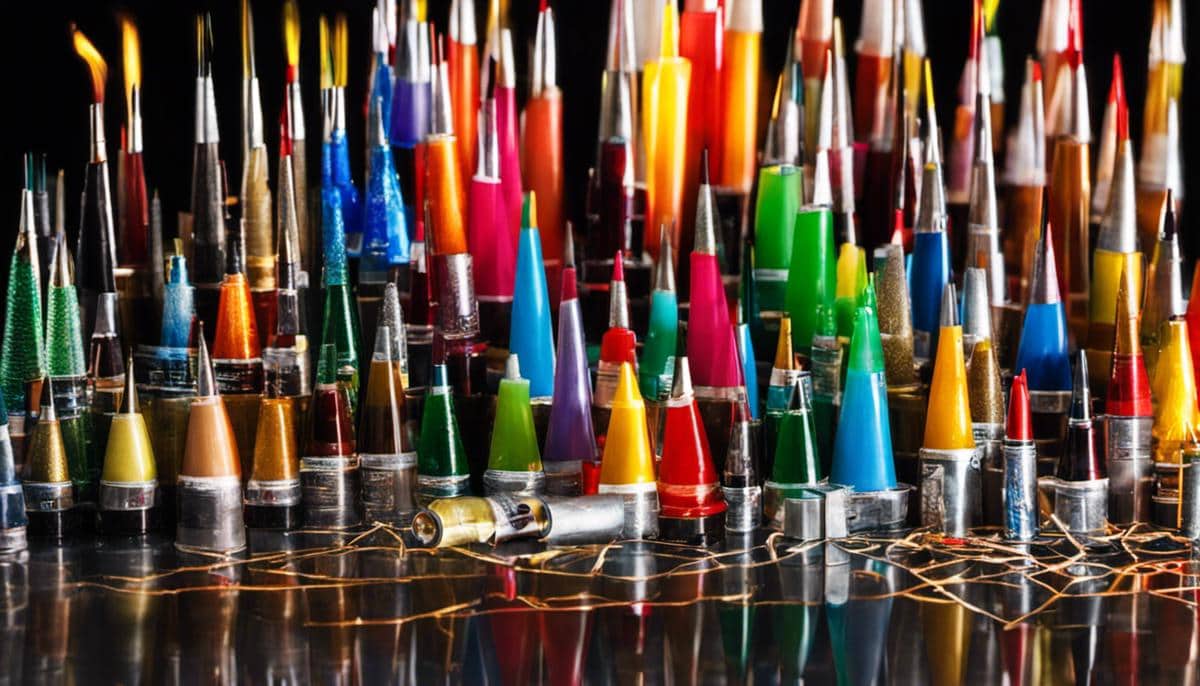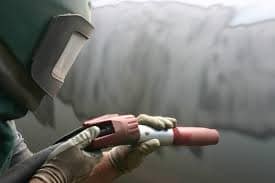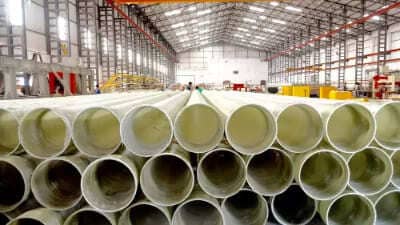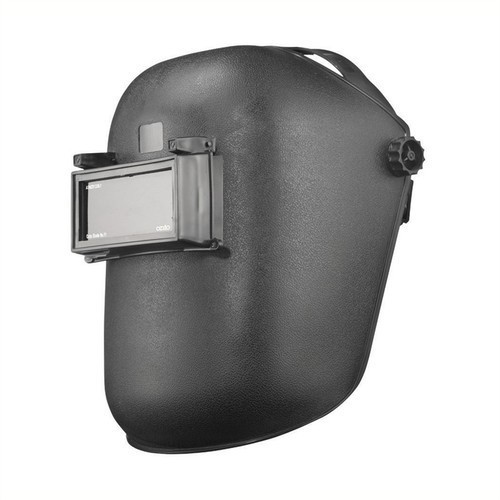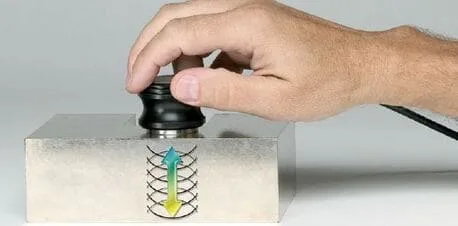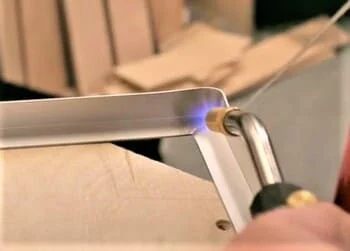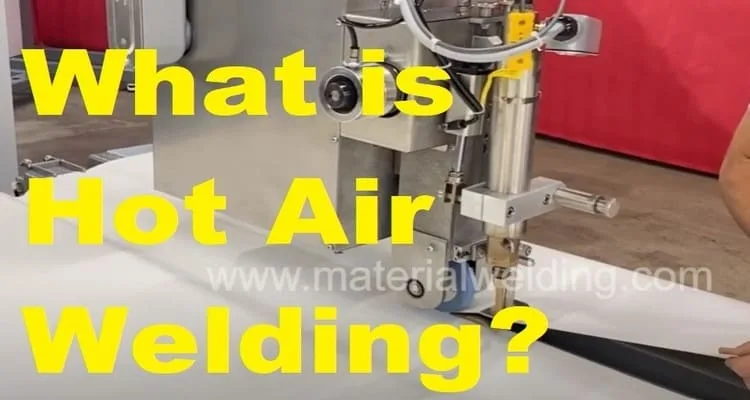Glass Welding Overview
Welding glasses and plastics is different than welding metals. Glasses and plastics have a melting range, known as the glass transition, as opposed to a specific melting point.
When the material is heated past the glass-transition temperature (Tg), it becomes softer and more pliable. When it reaches the glass-melting temperature (Tm), it becomes a thick, sluggish liquid with low surface tension.
The welding process is usually done by pressing the melted surfaces together, where they will mix and join upon contact. As the material cools and goes through the glass transition, it solidifies into one solid piece.
When one pipe is welded to another pipe, a combination of blowing and suction, as well as pressing and drawing, is used to ensure a good seal, shape the glass, and prevent the surface tension from sealing the pipe in itself.
When connecting glass tubes, the pipe ends are held directly to the tip of the flame to avoid overheating of the glass, which would cause the lead to the surface conglomerated and the glass appears metallic.
Welding is done by heating the glass to glowing heat while turning the tubes to prevent cracking. Then the pipes are held at a slight angle, the pipe ends are pressed against each other and rotated to seal the entire perimeter of the glass.
Finally, they are pressed together to temporarily thicken the weld and pulled apart to tape the weld to the required thickness, while at the same time slightly is blown to maintain the shape of the tube.
What is Glass Welding Used For?
Glass welding is a process used to join glass pieces together using heat and pressure.
It is commonly used in the construction of glass structures such as skylights, aquariums, and windows, as well as in the repair of glass objects such as mirrors and glass art.
The process can also be used to seal glass containers, such as glass bottles and jars, to keep the contents inside fresh. Additionally, glass welding is used in the production of scientific equipment and optical devices.
Some common applications of glass welding include:
- Construction of glass structures such as skylights, aquariums, and windows
- Repair of glass objects such as mirrors and glass art
- Sealing of glass containers such as glass bottles and jars
- Production of scientific equipment such as laboratory glassware
- Production of optical devices such as telescopes and camera lenses
- Production of automotive and marine glass
- Production of electronic equipment and devices
- Production of display cases and showcases
- Production of solar panels
- Production of medical equipment such as endoscopes.
Can You Weld Metal to Glass?
When welding glass, it is important to use the same type of glass to prevent cracking.
Different types of glass have different rates of thermal expansion, which can cause them to crack when they cool and contract at different rates.
It is also important to match the coefficients of thermal expansion when welding different types of glass together to prevent cracking. Some types of glass cannot be mixed together, so welding may not be possible.
Additionally, glass can be welded to metals and ceramics, but the process is typically adhesion rather than a mixture of the materials.
However, certain types of glass will only bond to certain types of metal. For example, lead glass can bond with copper or molybdenum, but not aluminum.
Laser Glass Welding
Laser glass welding is a method of joining glass pieces together using a focused laser beam to generate heat and pressure.
This process is highly precise and allows for minimal heat distortion and thermal stress on the glass. It also allows for welding at high speeds and in tight spaces, making it ideal for applications where precision and speed are important.
This method is also known as “Laser Glass Processing” and its advantage over traditional welding is that it is more precise and cleaner process with less thermal stress on the glass.
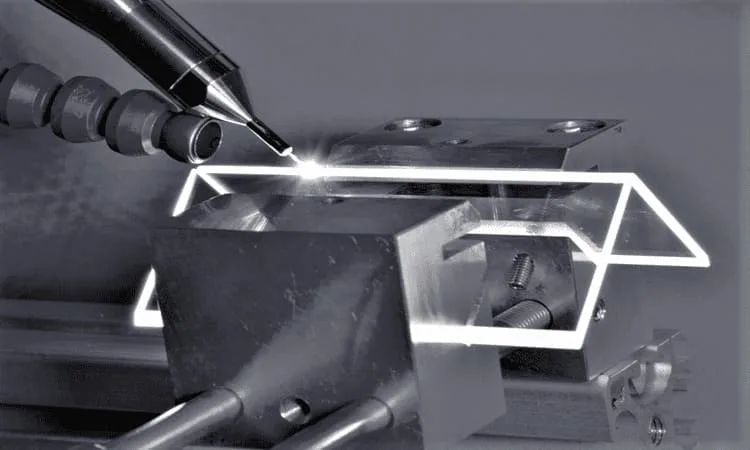
Laser glass welding equipment typically consists of a laser source, a beam delivery system, a workpiece holder, and a cooling system.
The laser source generates a highly focused beam of light, which is then directed through the beam delivery system to the workpiece.
The workpiece holder holds the glass pieces in place and applies pressure to them during the welding process. The cooling system is used to dissipate heat and prevent thermal damage to the glass.
When laser glass welding, the laser beam is directed at the joint between the two glass pieces. The intense heat generated by the laser melts the glass at the joint, creating a weld.
As the glass cools and solidifies, the joint becomes strong and durable. The process can be automated or manual depending on the application.
It is important to note that the laser beam must be properly aligned and focused, and the correct laser power and welding parameters must be used for the specific glass being welded, to achieve a quality weld.
The process is relatively faster than other welding methods, and the heat affected zone is very small, making it ideal for precision applications.
USP Glass welding
An alternative to joining glass is welding with ultrashort laser pulses. Here, the strong heat input into the material is absent.
USP glass welding refers to the process of using ultrasonic energy to weld glass components together.
This process involves the use of high frequency sound waves to create heat and pressure at the point of contact between the glass pieces, causing them to fuse together.
USP glass welding is a highly precise method of joining glass components, and is often used in the manufacture of medical and laboratory equipment, as well as other products where a high degree of accuracy is required.
Friction Stir welding of Glass
Friction stir welding (FSW) is a solid-state welding process that uses a rotating tool to create heat and plasticize the material at the joint line between two pieces of glass.
The rotating tool creates frictional heat, which softens the glass and allows it to be joined together. Unlike traditional welding methods, FSW does not rely on fusion or the use of a filler material. Instead, the glass is joined together through a process of plastic deformation and solid-state bonding.
The main advantage of FSW for glass is that it can create high-quality joints without the need for high temperatures or high pressure.
Additionally, FSW can join glass materials that are not suitable for other welding methods such as tempered glass, laminated glass, and coated glass. However, the process has limitations such as the material thickness, size and shape of the glass.
FSW of glass is a relatively new technology and is still being researched and developed. It is considered a promising method for joining glass components in various applications, including automotive, aerospace, and construction.
Reference: www.alustir.com
